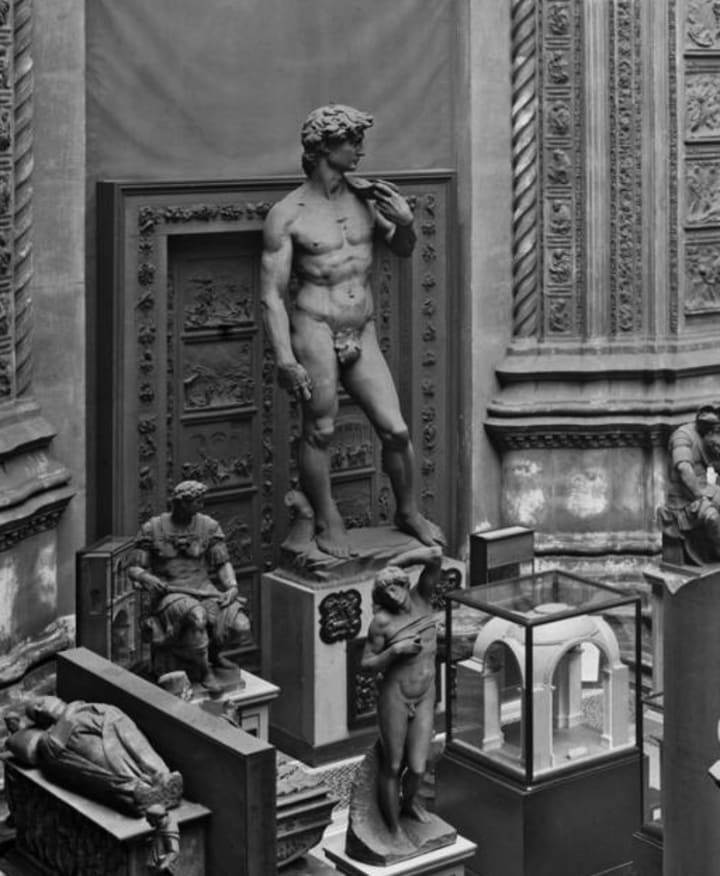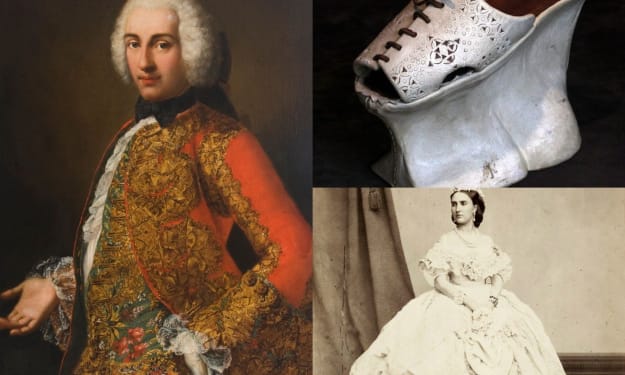Vatican's Fig Leaf Campaign
An art censorship movement in the medieval period

In 1563, the Council of Trent launched the Fig Leaf Campaign to camouflage the male genitals visible in art across Italy. The cover-up choice was a 'Fig Leaf'.
The fig leaf campaign became a significant art censorship movement in the medieval period. The fig leaves were synonymous with sin, sex, and censorship.
Why the fig leaf campaign
Until the 1400s, Romans were traditionally inspired by Greek art. The ancient marble sculptures were chiseled with a nude body and that represented honor and virtue. The naked idols symbolized purity.
But in the 1500s, the acts of art censorship began when the Counter-Reformation took over the Vatican and started portraying nudity as immodest and obscene.
In an effort to counter Protestantism's growing popularity, Catholic leaders spread the message that:
We must stop shielding ourselves behind a culture of art and forsaking religion.
The Roman Catholic Church initiated the censorship campaign with Michelangelo's David. Powerful clergymen wanted to clothe the nude David.
In the 1540s, Michelangelo was contracted by the Pope to paint the wall of the Sistine Chapel with fresco art depicting The Last Judgment.

But his nude art was condemned heavily by the powerful clergymen. Cardinal Carafa called the piece to be censored and Biagio da Cesena, the Pope's master of ceremonies, vociferated the fresco paintings to be suitable for 'public baths and taverns' and not a chapel.
These criticisms pressurized the Popes to condemn nudity in artwork and start using modesty to portray their biblical figures.
Therefore, Pope Julius II forced Michelangelo to repaint the religious figures and cover their nakedness. This gave rise to the fig leaf campaign.
The Council of Trent hunted for all the nude sculptures in Rome and started the campaign of carefully placing metal fig leaves to cover the genitals.
Historian Leo Steinberg pointed out in his 1983 book The Sexuality of Christ in Renaissance Art and in Modern Oblivion, that "many beautiful and antique statues" were "censored" in Rome by the order of Pope Paul IV.
Why fig leaves were used as a cover-up choice for classical sculptures
The Bible mentions that Adam and Eve covered themselves with fig leaves after eating the forbidden fruit. The earliest depictions of Adam and Eve in the catacombs of Rome showed them holding the fig leaves to cover their naked bodies.
Thus nudity became a sign of paganism in Medieval Europe and the Byzantine Empire. Consequently, many people began to view nude statues as pagan idols. To counter Protestant charges that the Roman Church was backsliding into paganism, Catholic leaders began covering statues' genitals.
The Aftermath
The fig leaf campaign demolished the rawness and artistry of renaissance painters. The systemic defacing of art continued in the name of preserving the roots of Christianity.
Michelangelo's painting The Last Judgment was altered twice and in the 1700s, a Mannerist artist named Daniele da Volterra added a loincloth and camouflaged the nudity in the painting to suit the Vatican's censorship standards.
This trend continued with the paintings of Masaccio from the 14th century and his artwork fell prey to this bizarre campaign. The painting Expulsion from the Garden of Eden was modified by an unknown artist and fig leaves were added to Adam and Eve figures to conceal the genitals.
The fig leaf campaign continued across the borders of Italy. When the plaster cast of David was presented to the Protestant British Queen Victoria by the Grand Duke of Tuscany, she was shocked to see the statue's nudity. And so, a large detachable fig leaf was given to hide the penis in the sculpture.

Last thoughts
Over the last 40 years, Masaccio's Expulsion from the Garden of Eden and Michelangelo's Last Judgement has been restored and the fig leaves have been removed.
Although the paintings have been restored to honor the originality and rawness of these maverick painters, the orthodox beliefs over nudity still persist in the Roman Catholic Church.
The fig leaf campaign became a historic event to censor art and nudity.
About the Creator
Kamna Kirti
Art enthusiast. I engage with art at a deep level. I also share insights about entrepreneurship, founders & nascent technologies.
https://linktr.ee/kamnakirti






Comments (2)
Furthermore, it didn't give "rise" to the Fig Leaf Campaign. The Campaign was already ongoing for roughly 2 years (since 1563), according to your statement.
There are so many things wrong with the information provided in this article. You are spreading disinformation as a result of your lack of research. Here's just one example: "Therefore, Pope Julius II forced Michelangelo to repaint the religious figures and cover their nakedness. This gave rise to the fig leaf campaign." No, Pope Julius II was long dead before Michelangelo even began the Last Judgement, he died in 1513... Furthermore, Michelangelo never besmirched his own work in this case. He was already dead roughly a year when the current pope of the time in 1565, Pope Pius IV, commissioned a painter by the name of Daniele Ricciarelli to do this on behalf of the church. Where exactly are you pulling your facts from, Kamna Kirti?